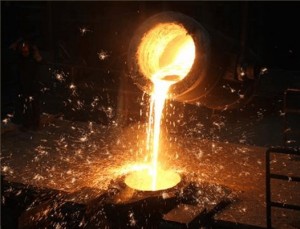From Casting Rolls to Industrial Casting (Part 1): Core Logic of Materials & Molding

When hot rolling rolls press steel billets at high temperatures and cold rolling rolls refine steel surface smoothness, their material selection and molding methods embody the universal principles of industrial casting. As a foundational example of metal forming in industry, the core logic of casting rolls—materials tailored to service needs and molding adapted to scenarios—applies to the automotive, aerospace, and heavy machinery sectors. This section unpacks these two pillars with practical details.
I. Material Design: Performance-Driven Selection
Casting rolls do not use "one-size-fits-all" materials; their composition is directly tied to their functional role:
- Hot rolling rolls: High-chromium cast iron (with high chromium content) forms hard carbides, which resist wear during continuous steel billet pressing and reduce the frequency of roll replacements.
- Cold rolling rolls: Ductile iron (with better toughness and strength than ordinary cast iron) has a dense, fine-grained structure, ensuring precise steel surface finish without microcracks caused by repeated pressure.
This logic—service scenarios dictate composition—guides the design of all industrial castings:
- High-temperature endurance: Turbine blades for aero-engines use superalloys (containing chromium and cobalt) to form heat-stable structures, extending the "alloy-enhances-performance" logic of rolls to extreme thermal environments.
- Pressure and corrosion resistance: Valve bodies in petrochemical applications use stainless steel—nickel in the alloy resists intergranular corrosion, while molybdenum prevents pitting—mirroring the durability-focused design of ductile iron rolls.
- Lightweight needs: Battery casings for new energy vehicles (NEVs) use aluminum alloys—silicon in the alloy improves casting fluidity, and its low density reduces vehicle weight—aligning with the "load-based material selection" logic of rolls.
Critical control: Roll manufacturing sets baselines for composition precision (e.g., calibrated chromium content for high-chromium cast iron). Specialized testing equipment monitors the melting process in real time for all castings, from automotive cylinder blocks to aerospace superalloys.
II. Molding Processes: Scenario-Driven Selection
Casting rolls use tailored molding methods rather than a universal approach:
- Small-batch/complex rolls (e.g., rolls with multi-step necks): Resin-bonded sand casting is used—this method offers good air permeability and room-temperature strength, and the sand mold can be broken after solidification, making it suitable for irregular shapes.
- Composite rolls (with a wear-resistant outer layer and tough core): Centrifugal casting is adopted—centrifugal force pushes molten high-chromium iron outward to form a dense wear-resistant layer, while the ductile iron core ensures impact resistance.
This logic—casting characteristics dictate process selection—applies across the industry:
| Molding Process | Core Logic | Suited For | Typical Applications |
| Sand Casting | Sand molds (broken post-solidification) | Complex shapes, small batches | Rolls, wind turbine hubs, machine beds |
| Centrifugal Casting | Rotation distributes molten metal | Symmetrical parts, dense structure | Roll outer layers, pipes, bearing rings |
| Investment Casting | Wax patterns + refractory coatings | High precision, thin walls | Turbine blades, medical implants |
| Die Casting | High-pressure/speed metal injection | Thin walls, mass production | Auto gearboxes, smartphone midframes |
Key commonalities: Sand-cast rolls and wind turbine hubs both use size-matched risers to prevent internal pores; centrifugal-cast rolls and bearing rings adjust rotational speed to ensure uniform distribution of molten metal.
Post time: Oct-15-2025